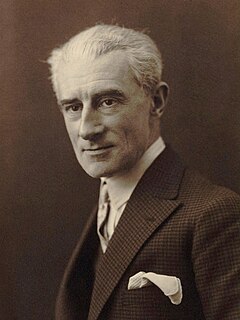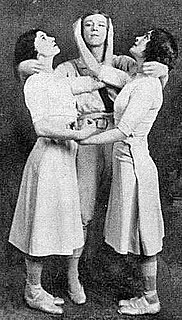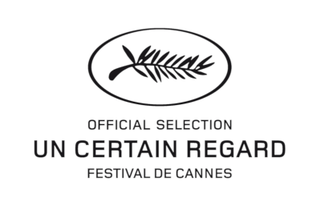Related Research Articles

(Achille) Claude Debussy was a French composer. He is sometimes seen as the first Impressionist composer, although he vigorously rejected the term. He was among the most influential composers of the late 19th and early 20th centuries.

Joseph Maurice Ravel was a French composer, pianist and conductor. He is often associated with Impressionism along with his elder contemporary Claude Debussy, although both composers rejected the term. In the 1920s and 1930s Ravel was internationally regarded as France's greatest living composer.

Pelléas et Mélisande is an opera in five acts with music by Claude Debussy. The French libretto was adapted from Maurice Maeterlinck's symbolist play of the same name. It premiered at the Salle Favart in Paris by the Opéra-Comique on 30 April 1902; Jean Périer was Pelléas and Mary Garden was Mélisande, conducted by André Messager, who was instrumental in getting the Opéra-Comique to stage the work. The only opera Debussy ever completed, it is considered a landmark in 20th-century music.
Children's Corner, L. 113, is a six-movement suite for solo piano by Claude Debussy. It was published by Durand in 1908, and was first performed by Harold Bauer in Paris on 18 December that year. In 1911, an orchestration by André Caplet was premiered and subsequently published.
Suite bergamasque is a piano suite by Claude Debussy. He began composing it around 1890, at the age of 28, but significantly revised it just before its 1905 publication. The popularity of the 3rd movement, "Clair de lune", has made it one of the composer's most famous works for piano.
The Gymnopédies, or Trois Gymnopédies, are three piano compositions written by French composer and pianist Erik Satie. He completed the whole set by 2 April 1888, but they were at first published individually: the first and the third in 1888, the second in 1895.
Claude Debussy's Préludes are 24 pieces for solo piano, divided into two books of 12 preludes each. Unlike some notable collections of preludes from prior times, such as Chopin's Op. 28 preludes, or the preludes from Johann Sebastian Bach's The Well-Tempered Clavier, Debussy's do not follow a strict pattern of tonal centers.

La mer, trois esquisses symphoniques pour orchestre, or simply La mer, L. 109, CD. 111, is an orchestral composition by the French composer Claude Debussy.

Prélude à l'après-midi d'un faune, known in English as Prelude to the Afternoon of a Faun, is a symphonic poem for orchestra by Claude Debussy, approximately 10 minutes in duration. It was composed in 1894 and first performed in Paris on 22 December 1894, conducted by Gustave Doret. The flute solo was played by Georges Barrère.

Nocturnes, L. 91, CD. 98 is an impressionist orchestral composition in three movements by the French composer Claude Debussy, who wrote it between 1892 and 1899. It is based on poems from Poèmes anciens et romanesques.

The Seduction of Claude Debussy is the fifth and final studio album by Art of Noise, released in June 1999 in the United Kingdom and the United States, and December 1999 in Japan. It features a line-up of Trevor Horn, Anne Dudley, Paul Morley and Lol Creme, along with other appearances from John Hurt, soprano Sally Bradshaw, Rakim, and Donna Lewis. As it had been 10 years since their last album, this album carries a completely different sound to that which had defined their four previous albums. The group blended the music of French impressionist composer Claude Debussy with drum and bass, opera, hip hop, jazz, and narration, to create a concept album which they described as "the soundtrack to a film that wasn't made about the life of Claude Debussy."

Jeux (Games) is a ballet written by Claude Debussy. Described as a "poème dansé", it was written for Sergei Diaghilev's Ballets Russes with choreography by Vaslav Nijinsky. Debussy initially objected to the scenario but reconsidered the commission when Diaghilev doubled the fee. Debussy wrote the score quickly, from mid-August to mid-September 1912. Robert Orledge has analysed the chronology of Debussy's composition and preserved manuscripts of the score.

Un Certain Regard is a section of the Cannes Film Festival's official selection. It is run at the salle Debussy, parallel to the competition for the Palme d'Or. This section was introduced in 1978 by Gilles Jacob.

Des pas sur la neige is a musical composition by French composer Claude Debussy. It is the sixth piece in the composer's first book of Préludes, written between late 1909 and early 1910. The title is in French and translates to "Footprints in the Snow" The piece is 36 measures long and takes approximately three and a half to four and a half minutes to play. It is in the key of D minor. The prelude was, along with Danseuses de Delphes, one of the preludes Debussy believed should be played "entre quatre-z-yeux" meaning intimately, as if privately.
La fille aux cheveux de lin is a musical composition for solo piano by French composer Claude Debussy. It is the eighth piece in the composer's first book of Préludes, written between late 1909 and early 1910. The title is in French and translates roughly to "The Girl with the Flaxen Hair". The piece is 39 measures long and takes approximately two and a half minutes to play. It is in the key of G♭ major.
L'enfant prodigue is a scène lyrique or cantata in one act by Claude Debussy with a text by Édouard Guinand. The cantata premiered in Paris on June 27, 1884 as part of the Prix de Rome for composition competition which was awarded to Debussy with this piece by 22 out of 28 votes. The prize win garnered Debussy a scholarship to the Académie des Beaux-Arts, which included a four-year residence at the Villa Medici, the French Academy in Rome, to further his studies (1885-1887).

Debussy is a rayed impact crater on Mercury, which was discovered in 1969 by low resolution ground-based radar observations obtained by the Goldstone Observatory. Later in 1990–2005 it was imaged in more detail by the Arecibo Observatory. The crater was initially known as the feature A. The bright appearance of rays in the radar images indicates that the crater is geologically young, because fresh and rough surfaces of young impact craters are good scatterers of radio waves.
Six sonatas for various instruments, composed by Claude Debussy, French musician was a projected cycle of sonatas that was interrupted by the composer's death in 1918, after he had composed only half of the projected sonatas. He left behind his sonatas for cello and piano (1915), flute, viola and harp (1915), and violin and piano (1916–1917).
Images is a suite of six compositions for solo piano by Claude Debussy. They were published in two books/series, each consisting of three pieces. These works are distinct from Debussy's Images pour orchestre. The first book was composed between 1901 and 1905, and the second book was composed in 1907. The total duration is approximately 30 minutes. With respect to the first series of Images, Debussy wrote to his publisher, Jacques Durand: "Without false pride, I feel that these three pieces hold together well, and that they will find their place in the literature of the piano ... to the left of Schumann, or to the right of Chopin... "

Dances for Harp and String Orchestra, in full in the original, Danses pour harpe chromatique avec accompagnement d'orchestre d'instruments à cordes, is a 1904 work by Claude Debussy. There are two sections: Danse sacrée and Danse profane, and the work is sometimes billed accordingly. It is a two-movement work, of about ten minutes' duration.
References
- ↑ "Lyric Drama". The Canberra Times . Vol. 37, no. 10, 471. Australian Capital Territory, Australia. 27 February 1963. p. 27. Retrieved 14 February 2017– via National Library of Australia.